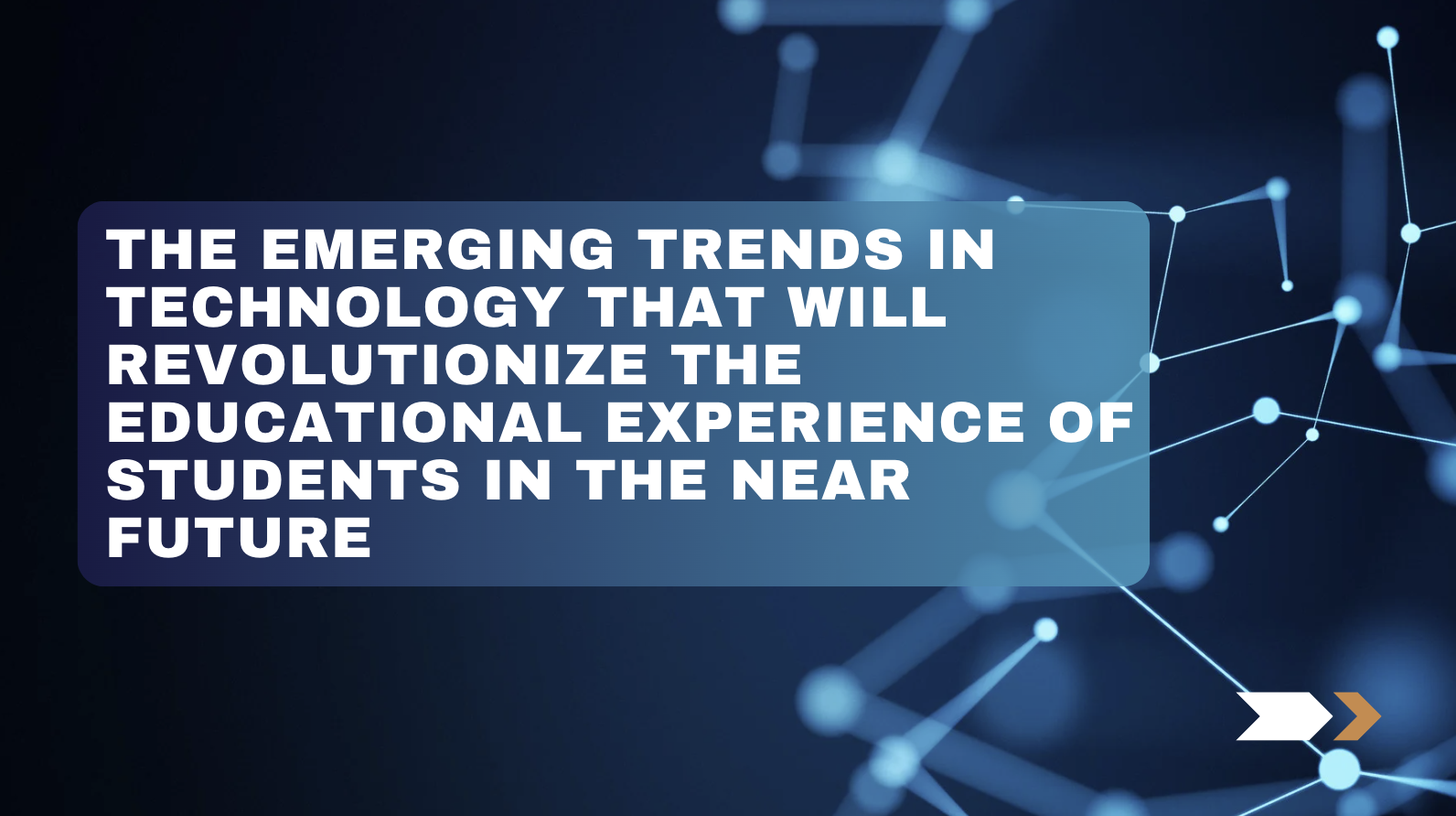

Technology’s impact on education is growing more significant as it develops, therefore influencing students’ learning, interaction, and future preparation. Although many innovations such as virtual classrooms and e-learning systems have already become standard, numerous new trends have great potential to transform student education in ways that are beyond simple enhancements. For students seeking professional guidance, platforms that offer expert services to buy speech online and provide custom speeches tailored to their needs are gaining popularity, highlighting the demand for personalized learning solutions.
The combination of cutting-edge technology including artificial intelligence-driven tools, immersive simulations, and blockchain credentialing promises to fundamentally change the educational scene.

Like GPT-based systems, generative artificial intelligence is developing outside of simple text production to become potent instruments for tailored learning. These days, AI-driven platforms may generate customized lesson plans, modify teaching approaches depending on real-time comments, and replicate challenging settings for practical education. From research to formatting, these tools are also quite helpful for students at all phases of their work in finishing academic projects. They simplify chores.
“Generative AI’s ability to analyze individual learning patterns and provide specific guidance will bridge gaps in traditional education,” says researcher on artificial intelligence and education Dr. Lisa Harrington. It lets one stray from “one-size-fits-all” instruction.
Particularly in STEM fields, 63% of students using AI-powered tutoring tools demonstrated a 20% gain in test scores, according to a McKinsey 2023 research. Moreover, 50% of all digital learning systems expected to exist by 2026 would have AI customizing tools.
Extended Reality, which includes augmented reality and virtual reality, is becoming a need rather than a novelty in the classroom
Applications of Extended Reality in Education:
These several uses show how XR improves learning as well as makes education more inclusive and easily available for students from all backgrounds.
“XR offers a multisensory learning experience that greatly increases retention rates,” notes Mark Choi, a technology strategist focused in XR. “It helps one to understand abstract ideas by turning them into concrete experiences.”
According to a PwC study, VR students are more confident in using their knowledge and are 4x faster to train than classroom students. XR hardware is expected to be adopted in schools by 45% yearly until 2028 as prices of it drop.
Blockchain technology promises to solve long-standing problems in education including data security and credentialing fraud. Blockchain guarantees that degrees, academic certificates, even micro-credentials are verifiable and tamper-proof by building immutable records.
Samantha Grant, a blockchain implementation specialist, notes, “The decentralized nature of blockchain offers unparalleled transparency and security, which is critical as education moves online. Students can have lifelong, portable records of their learning achievements.”
A report by Gartner predicts that by 2027, 25% of universities worldwide will adopt blockchain for credential verification, reducing fraudulent claims by over 30%.
Edge computing is becoming a transforming technology as IoT devices and connected classrooms get more and more common. Edge computing provides real-time feedback, adaptive learning, and seamless connectivity—even in far-off locations with poor internet access—by processing data locally instead of depending on centralized servers.
Important Edge Computing in Education:
Edge computing is likely to be very important in closing the digital divide and improving educational parity all around.
Gamification is not new, but when combined with AI, it becomes far more effective. Adaptive gaming platforms can now adjust challenges in real time, ensuring that students remain engaged while achieving optimal difficulty levels.
“Gamification motivates students by turning learning into a rewarding experience,” states Maria Lopez, an ed-tech consultant. “AI ensures that these experiences are meaningful by aligning them with specific learning goals.”
According to a study by Deloitte, students using gamified learning platforms spend 34% more time engaging with content and achieve 22% higher scores compared to those using traditional methods.
While still in its infancy, quantum computing is poised to revolutionize education, particularly in advanced fields like physics, mathematics, and computer science. Its ability to process complex calculations instantaneously opens new possibilities for teaching and research.
Dr. Ravi Menon, a quantum computing researcher, suggests, “Quantum computing will redefine how we teach problem-solving in technical disciplines. It will shift focus from solving equations manually to interpreting quantum-generated solutions.”
MIT predicts that by 2030, quantum computing will be integrated into the curriculum of 40% of top universities worldwide, particularly in postgraduate programs.
AI in education often raises ethical concerns, especially when used in grading. However, the rise of explainable AI (XAI) ensures that assessment decisions are transparent, fair, and free from biases.
Key Benefits and Challenges of Ethical AI in Assessments
| Aspect | Benefit | Challenge |
|---|---|---|
| Transparency | Students and educators can understand how decisions are made. | Ensuring that AI models remain interpretable and not overly complex. |
| Fairness | Reduces biases that may be present in human grading. | Addressing biases embedded in training datasets. |
| Efficiency | Speeds up grading and provides immediate feedback. | Balancing speed with maintaining accuracy and reliability. |
| Personalization | Tailors assessments to individual learning styles. | Preventing over-reliance on automated tools. |
| Accountability | Allows for decisions to be challenged and reviewed. | Establishing clear protocols for reviewing AI-based decisions. |
The trends influencing student learning are not just slight but also transforming. From tailored learning driven by generative artificial intelligence to immersive experiences with XR and safe credentialing via blockchain, these technologies are laying the groundwork for a more inclusive, effective, and interesting learning future.
To realize their potential, nevertheless, the difficulty is guaranteeing fair access, moral use, and appropriate training for teachers. These tendencies will probably combine in the next decade, redefining the limits of what education can do.